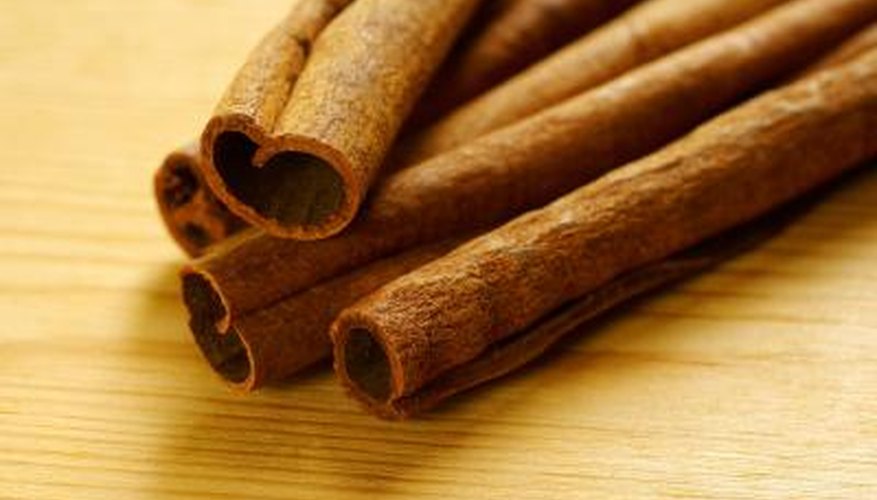Growing cinnamon spices takes specific cultivation techniques. It comes from the Laurel tree bark. If left to flourish, this tree can reach heights of up to 19.5 m (65 feet). Cinnamon also comes from the cinnamomum cassia tree. Both trees produce cinnamon from the bark, but the Laurel tree creates cinnamon sticks that naturally curl inward after being cut. Growing cinnamon at home is not simple, but with patience and persistence, you can produce ample amounts of cinnamon to enjoy in your coffee and other culinary creations.
- Growing cinnamon spices takes specific cultivation techniques.
- Both trees produce cinnamon from the bark, but the Laurel tree creates cinnamon sticks that naturally curl inward after being cut.
Select a location in your garden for the cinnamon tree. Choose a spot away from other vegetation or plant life so the roots have plenty of room to spread underground. All trees have extensive root systems and growing trees too close to other plants can compromise growth.
Prepare the soil for your tree by tilling the ground to break up rocky or claylike soil. Add a 7.5 cm (3 inch) layer of compost or fertiliser and then use your garden tiller to blend the fertiliser into the soil.
Dig a 30 cm (1 foot) deep hole and plant a Laurel tree transplant in the ground. Water your tree once per week with fresh water. Moisten the soil about 5 cm (2 inches) deep each time you water the tree, but avoid over-saturating the dirt. Allow the tree to grow for two full years before harvesting cinnamon. The tree is generally 2.4 to 3 m (8 to 10 feet tall) at this age, so you can let the tree grow for longer if you want to yield more cinnamon out of one tree.
- Prepare the soil for your tree by tilling the ground to break up rocky or claylike soil.
- Dig a 30 cm (1 foot) deep hole and plant a Laurel tree transplant in the ground.
Cut your tree down when after at least two years have passed. Use a sharp pruning knife to cut strips of bark in a downward motion on the tree.
- Cut your tree down when after at least two years have passed.
- Use a sharp pruning knife to cut strips of bark in a downward motion on the tree.
Allow the bark to coil up on its own and store the cinnamon in jars. The bark usually begins to coil within a few days of being cut. You can harvest the entire tree for your own purposes or sell the cinnamon. If you choose, you can leave the tree in the ground and harvest cut out strips of cinnamon when needed. This creates odd-looking patches on the laurel tree, but it does extend the overall lifespan of the tree while allowing you to enjoy fresh cinnamon when needed.
TIP
Cinnamon and other spices stay fresh for two to three years, but you can extend the life of your spices even more by storing them in air tight glass jars. You can use these same cultivation techniques with a cinnamomum cassia tree as well. This tree produces cinnamon that is slightly sweeter than the Laurel tree. Only cut out three 12.5 cm (5 inch) long sections of cinnamon once per month if you plan to allow the tree to live rather than harvesting all the cinnamon at once. Harvesting too much cinnamon at one time can kill a living tree. If you want the tree to live its best, only take a moderate amount of cinnamon and give the tree time to regenerate before taking more.
